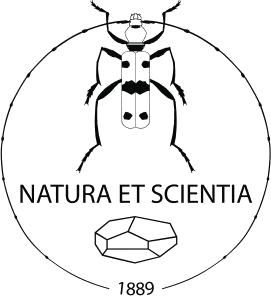Centre for Ecological Research, Hungary

Hungarian Academy of Sciences (MTA) established the Centre for Ecological Research on 1st January 2012. Centre for Ecological Research consists of three institutes the Institute of Ecology and Botany, the Institute of Aquatic Ecology and the Institute of Evolution. The main mission of the Centre for Ecological Research is to conduct high-quality research on biodiversity and ecosystems, including aquatic and terrestrial life. Centre is primarily dedicated to ecological research, but many of our studies are related to the impact of agriculture and forestry on biodiversity, traditional ecological knowledge or interdisciplinary topics. Centre for Ecological Research is focused on the integration of the institutes and disciplines, as it is difficult to tackle complex environmental challenges in isolation. In addition to research, we are committed to building bridges between science and society and thus are involved in EU and global policy development.
The Institute of Ecology and Botany seeks to propose scientific solutions to the environmental challenges of our time, such as land-use change, habitat degradation, climate change, urbanisation, the effects of intensive agriculture, invasions, and the emergence of new diseases. The Institute’s nearly 80 researchers, organised in research groups, work on a wide range of organism groups and habitats, using a variety of methodological approaches. In addition to its basic research activities, the institute carries out several public monitoring and applied research activities.
Zeleni prsten, Public institution of Zagreb County

https://zeleni-prsten.hr/portal/
The Green Ring of Zagreb County is a public institution, whose vision is to encourage the processes of protection, maintenance and promotion of protected areas of Zagreb County in order to protect and preserve the originality of nature, ensure the undisturbed development of natural processes and sustainable use of natural resources in relation to the challenges of globalization, ecological and climate challenges facing the protection of nature and the environment. The mission of the Public Institution Green Ring of Zagreb County is to develop the excellence of professional and research work in collecting data for the purpose of monitoring the state of nature conservation in the County in the form of monitoring, in the field of supervising the implementation of conditions and measures for nature protection, preserving the ecological network areas and transferring knowledge and awareness in the field of nature and environmental protection to the local population and all stakeholders. The general goals are the preservation of the rich natural heritage, the use of EU funds for the purpose of improving the process of protection, maintenance and promotion of protected areas, the development of the Public Institution Green Ring towards a professional and scientific institution. The activities of the Institution include performing tasks and research related to the protection, maintenance and promotion of protected areas in Zagreb County with the aim of protecting and preserving the authenticity of nature, ensuring the undisturbed development of natural processes and sustainable use of natural resources, and monitoring natural values in Zagreb County and implementing nature protection conditions and measures.
Research Centre of the Slovenian Academy of Sciences and Arts

The Scientific and Research Centre of the Slovenian Academy of Sciences and Arts, abbreviated ZRC SAZU, was founded in 1981. Since then, it has established itself in the Slovenian public as a central scientific and research institution, primarily in the fields of humanities, social sciences and selected areas of natural sciences. Today, it has 18 institutes employing a total of almost 300 researchers. They are responsible for implementing projects ranging from national to international, from basic to applied, from publicly funded to those supported by the economy.
Slovenia Forest Service

The Slovenian Forest Service is a public institution established by the Republic of Slovenia by the Forest Act (1993) and provides public forestry services in all forests in Slovenia, regardless of ownership. The service is organised at the national level with its headquarters in the Central Unit Ljubljana, at the regional level in 14 regional units, and at the local level in 69 local units and 396 forest departments. The Slovenian Forest Service consists of 8 special-purpose hunting grounds that sustainably manage game, protect rare and endangered animal species and carry out hunting tourism activities. The Slovenian Forest Service employs around 730 people. The Slovenian Forest Service is almost entirely financed from the budget of the Republic of Slovenia, while the special-purpose hunting grounds are mainly self-financed. The Slovenian Forest Service does not engage in logging, felling, transport and sale of wood or trade in forest products.
University of Zagreb Faculty of Geodesy

The Faculty of Geodesy at the University of Zagreb is the only Croatian institution providing high education in geodesy and geoinformatics and the largest faculty in this domain in south-eastern Europe. The faculty of Geodesy has 105 employees, of which about half are in scientific teaching and scientific titles. The Faculty of Geodesy performs study programs in geodesy and geoinformatics at all levels (undergraduate, graduate, specialist and postgraduate). The Faculty of Geodesy is the holder or partner in many scientific research and professional projects and strongly encourages and participates in projects with industrial partners from the framework of applying new technologies and technology transfers and professions. Most of the projects in which the Faculty of Geodesy participates are financed by the European Commission (currently 2 Horizon2020 projects and several ESF projects, Interreg, etc.), but it also participates in national projects such as projects of the Croatian Science Foundation. The Faculty of Geodesy has been conducting scientific research for many years to develop, apply, and disseminate knowledge in the field of space technologies, such as the application of data from the Copernicus program of the European Space Agency. Furthermore, the Copernicus Relay and Copernicus Academy Croatia offices were established at the Faculty of Geodesy to promote and disseminate knowledge about the Copernicus program and encourage technological development and expansion of the geodetic economy in the field of remote sensing and space technologies. The main goal of the Faculty is to develop new technologies and methods in the field of geodesy and geoinformatics and applications in technical, biotechnical, natural and other sciences, along with the education of students Geodesy. In this way, the way is laid for the geodetic economy and the entire economy to expand the business and create new jobs.
Institute of Lowland Forestry and Environment, Serbia

The Institute for Lowland Forestry and the Environment is a scientific research institution whose activities include applied and developmental research aimed at meeting the needs of direct users of research results and fundamental (basic) research that is the basis for applied and developmental research. The Institute was founded in 1958 by the Assembly of the Autonomous Province of Vojvodina. The Institute has so far implemented numerous projects related to the improvement of cultivation and management of different types of trees, the preservation and directed use of forest genetic resources, the establishment of protective greenery, the recultivation of degraded soils, the care and protection of forests, the development of forest management principles, etc. The Institute is a member of international organizations: International Union of Forest Research Organizations (IUFRO), European Forest Institute (EFI), EVOLution of TREEs as drivers of terrestrial biodiversity (EVOLTREE) and European Forest Genetic Resources Program (EUFORGEN). Associates of the Institute are also members of bodies such as: Executive Committee of International Poplar Commission (UN-FAO-IPC), International Co-operative Program on Assessment and Monitoring of Air Pollution Effects on Forests (ICP Forests), Forest Stewardship Council (FSC), American Phytopathological Society (APS) and International Society for Plant Pathology (ISPP).
University of Bucharest, Romania

The University of Bucharest (UB) is a public research university in Bucharest, Romania. It was founded in its current form on 4 July 1864 (160 years ago) by a decree of Prince Alexandru Ioan Cuza to transform the former Princely Academy into the current University of Bucharest, making it one of the oldest universities in Romania. It is one of the five members of the Universitaria Consortium (a group of elite Romanian universities). The University of Bucharest offers study programs in Romanian and English, and is classified by the Ministry of Education as an advanced research and education university. Its membership in CIVIS – the European Alliance of Universities – together with ten other leading European universities, once again confirms that UB is an institution strongly focused on the social changes of the contemporary world, as well as a socially and civically engaged organization, connected to key local, national, European and global challenges.
National Museum of Natural History at the Bulgarian Academy of
Sciences

https://www.nmnhs.com/about-us-en.html
The National Museum is the only national institution directly concerned with the preservation of scientific collections of living and non-living nature from Bulgaria and the world. The study of biodiversity, environmental protection and the evolution of organisms are the main priorities of the museum. Therefore, the main task is the comprehensive study of the fauna, flora, fossils, minerals and rocks of Bulgaria and other countries. It develops the following scientific areas: taxonomy, faunistics, zoogeography and ecology of arachnids, millipedes, insects and all classes of vertebrates; taxonomy of fossil mammals, birds and brachiopods; floristics; mineralogy. Some of the areas have priority, which is why the museum has become the national center of biospeleology, archaeozoology and paleontology of vertebrates and the study of bats. Insect studies are also very developed. In addition to scientific studies, museum activities are carried out to maintain and enrich the exhibition and process scientific collections. In this way, the museum achieves its educational and promotional mission.
Life Sciences University “King Michael I” in Timișoara, Romania

https://www.usab-tm.ro/en/regulamente-ri
The Life Sciences University “King Michael I” of Timișoara is one of Romania’s leading academic institutions in the field of agricultural and life sciences. With a history dating back to 1945, the university has continually evolved to meet the demands of modern education and research. USAMVBT specializes in agriculture, horticulture,animal acience, veterinary medicine, biotechnology, environmental protection, food engineering. USAMVBT is actively engaged in international academic cooperation, participating in Erasmus+ programs, joint research initiatives, and student exchanges. The university promotes multiculturalism and encourages its students to gain global perspectives. The mission of the university is to advance life sciences, contribute to sustainable development, and train highly qualified professionals who can address current global challenges in agriculture, food security, and environmental protection.
Nature Conservation Movement Sremska Mitrovica, Serbia

The special nature reserve Zasavica is a nature reserve that was placed under state protection in 1977 as a category I natural asset of exceptional importance. The reserve is located in northern Mačva, in the territories of the municipalities of Sremska Mitrovica and Bogatić. This is a marshy area with flood meadows and forests with an area of 1,825 hectares along the Zasavica river, 33.1 km long. The Zasavica river, the Batar stream, the Jovac and Prekopac canals flow through this reserve, and there is also a connection with the Sava river. The total area of the reserve is 1825 ha, of which 675 ha are in the first category of protection. Zasavica is fed underground by water from the Drina river and by gravity from the Cer mountain. It belongs to the Black Sea basin and is one of the last originally preserved wetlands, seen from north to south of Serbia.
10 million Trees Foundation, Hungary

The 10 Million Trees Foundation is a Hungarian non-governmental organization founded in 2019 with the goal of planting 10 million trees in Hungary to combat climate change and promote biodiversity. The founder of the foundation is art historian and architecture critic András Iván Bojár. The organization emphasizes collective action, involving individuals, communities, schools, companies, and institutions across Hungary. With more than 100 local groups, volunteers not only plant, but also nurture and protect trees, promoting environmental awareness and sustainable thinking. The foundation collaborates with international initiatives such as Life Terra through the European Arbor Day, further expanding its impact beyond Hungary’s borders. By 2023, the foundation had planted over 130,000 trees across the country, and plans to plant tens of thousands more trees in the coming years.
